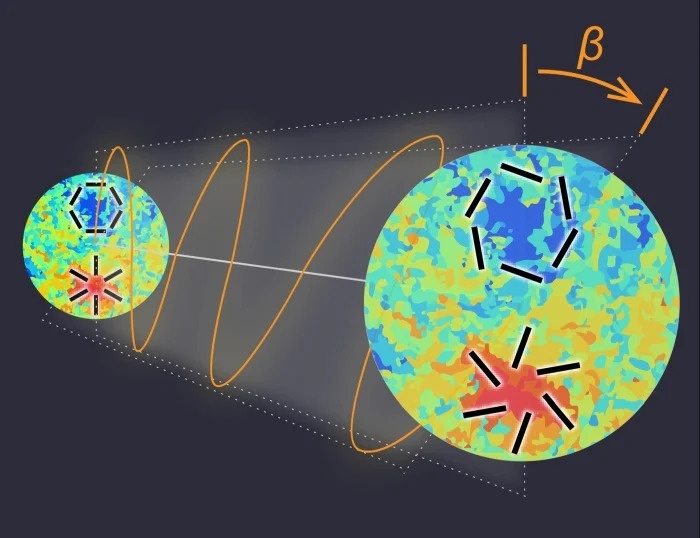News & Events

"New Extraction of the Cosmic Birefringence from Planck"
In a recent paper published in Physical Review Letters on the 23th of November, Yuto Minami (High Energy Accelerator Research Organisation, Japan) and Eiichiro Komatsu (Max Planck Institute for Astro- physics, Germany & Kavli Institute for the Physics and Mathematics of the Universe, Japan) have presented a new measurement of the cosmic birefringence angle, β, of the Cosmic Microwave Background (CMB).
The CMB is one of the best tools we have to probe the early universe. When the universe was ∼ 300, 000 years old, the temperature was such that the first hydrogen atoms could form and the photons were then able to travel freely until today. The birefringence angle β measures a possible rotation of the linear polarization of the CMB, see Figure 1. The name comes from a similar effect that can happen when light passes through a material with a polarization dependent refractive index (a birefringent material).
The Standard Model (SM) of particle physics is the quantum field theory (QFT) describing the strong, weak and electromagnetic interactions of three families of quarks and leptons, and has been extremely successful in describing all experimental observations in a large range of energy scales. The SM predicts β = 0, and so far no deviation from this prediction has been found. Therefore a non-zero value of this angle could give a hint on new physics that goes beyond the SM. In particular, β ≠ 0 would be a signal of parity-violation physics. A rotation in the CMB linear polarization could be due to an interaction between the CMB and dark matter or dark energy, if any of these two dark sectors are described in terms of pseudoscalar, “axionlike” fields.
However, β is very difficult to detect. Unless we precisely know how the polarization-sensitive detectors are oriented relative to the sky, it would be impossible to tell whether what we are looking at is actually β, or a miscalibration angle, α. Minami and Komatsu have developed a new technique to disentangle the effect of α and β. They considered also the measures of the Galactic foreground emission. This foreground is due to the fact that we are surrounded by very diffuse matter from our Galaxy that emits microwaves, meaning light with a frequency similar to the CMB light. The idea is to use the Galactic foreground measurements to eliminate the contribution of α to the CMB polarization rotation angle. This is achieved because both α and β angles rotate the CMB, but the Galactic foreground is rotated only by α.
By using this technique, the authors have excluded β = 0 at 99.2% CL, corresponding to a 2.4σ significance, not enough to claim a discovery of new physics. However, these findings indicate that new hints about the dark sectors could be found by ongoing and future analyses of the CMB polarization pattern [1].

Figure 1: Illustrative representation of angle of birefringence, β. (Image by Yuto Minami).
References
[1] Y. Minami and E. Komatsu. “New Extraction of the Cosmic Birefringence from the Planck 2018 Po- larization Data”. In: 125.22, 221301 (Nov. 2020), p. 221301. doi: 10.1103/PhysRevLett.125.221301. arXiv: 2011.11254 [astro-ph.CO].
by Mario Fernández Navarro ( HIDDeN SOTON ESR) and Francesco Costa ( HIDDeN UGOE ESR)


